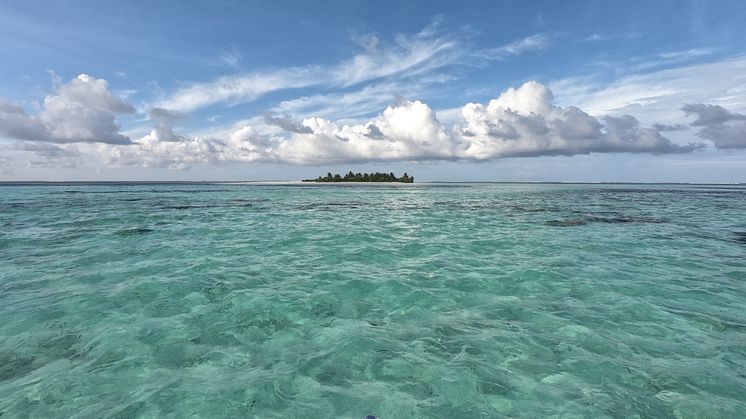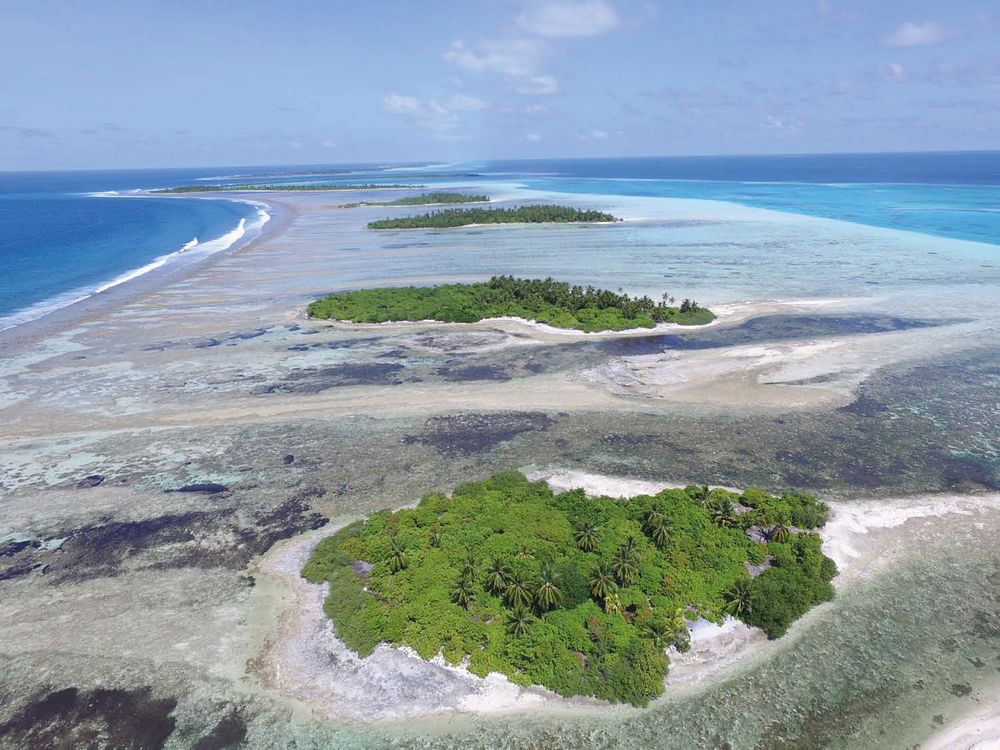
Press release -
‘Superhero’ seagrass meadows produce sand that may protect coral reef islands from sea-level rise
Seagrass meadows produce large volumes of sediment that can build coral reef island shorelines, increasing the resilience of low-lying reef island nations to future sea level rise, according to new research from Northumbria University.
The new study, which is published in Nature Communications Earth and Environment, provides the first evidence of the volume of sediment produced by a seagrass meadow in a reef island setting.
It has long been known that seagrass provides many valuable societal benefits. Seagrass meadows are biodiversity hotspots, slow climate change by storing carbon, and protect land from coastal erosion.
Researchers have now highlighted an additional benefit provided by seagrass meadows: they are important sources of sediment that can both build and maintain coral reef islands.
Seagrass leaves have tiny living creatures known as epibionts living on them. These epibionts are made of calcium carbonate which creates sand when the seagrass leaves die or when the epibionts fall off the leaves. This sediment is then transported by waves and can be deposited on nearby islands.
A research team, led by Dr Holly East from Northumbria University’s Department of Geography and Environmental Sciences, studied seagrass meadows and epibionts in the southern Maldives.

They then analysed hundreds of seagrass leaves in their lab and were able to calculate the size and mass of the epibionts living within the meadow and how much sediment they would create.
They discovered that one square kilometre of seagrass produced more than 700 tonnes of sediment per year, two thirds of which was sand-sized and of the right size for island building.
Based on the volume of sediment produced, the researchers say that a one square kilometre meadow could produce enough sediment to build an island the size of its neighbour, Faathihutta, in less than 20 years.
Dr East explained: “Seagrasses may not look like superheroes, but these underwater meadows provide important benefits to society.
“Seagrass meadows are commonly found close to reef islands, but their potential role as sources of reef-island building sediments has been overlooked. Our findings quantify the rate of sediment production from seagrass meadows, and the proportion of that sediment that is of the right type to contribute to coral reef island building.”
Dr East added that tropical seagrass meadows may help to protect coral reef islands from the impacts of climate change, such as sea-level rise, which is a clear danger to low-lying coral reef island nations, including the Maldives.
“The ability of seagrass meadows to produce sediments that can build and maintain coral reef island shorelines may help the islands to grow and remain resilient to rising sea levels. Their very survival may be dependent on the sand produced by these incredible underwater seagrass meadows.”
She added that the findings reinforced the need for governments to work with the tourist industry to conserve seagrass meadows.
“Seagrasses are actively removed by the tourist industry in many regions as pristine white sands are considered more aesthetically appealing than seagrass meadows,” she said.
“This is a false expectation and deprives visitors from experiencing the natural beauty that comes with the wide variety of amazing marine life that call seagrass meadows their home, such as incredible schools of baby fish, seahorses and turtles.
“Our findings present a new and compelling geomorphic argument for seagrass conservation.”
The study, Seagrass meadows are important sources of reef island-building sediment is now available in Nature Communications Earth and Environment.
Northumbria University is ranked second in the UK for its research power in geography and environmental studies, with 90 per cent of its studies in this area rated as either world-leading or internationally excellent, according to the results of the Research Excellence Framework 2021.
Topics
UNIVERSITY OF THE YEAR 2022 (Times Higher Education Awards)
Northumbria is a research-intensive modern university with a global reputation for academic excellence. Find out more about us at www.northumbria.ac.uk
--- Please contact media.communications@northumbria.ac.uk with any media enquiries or interview requests ---










